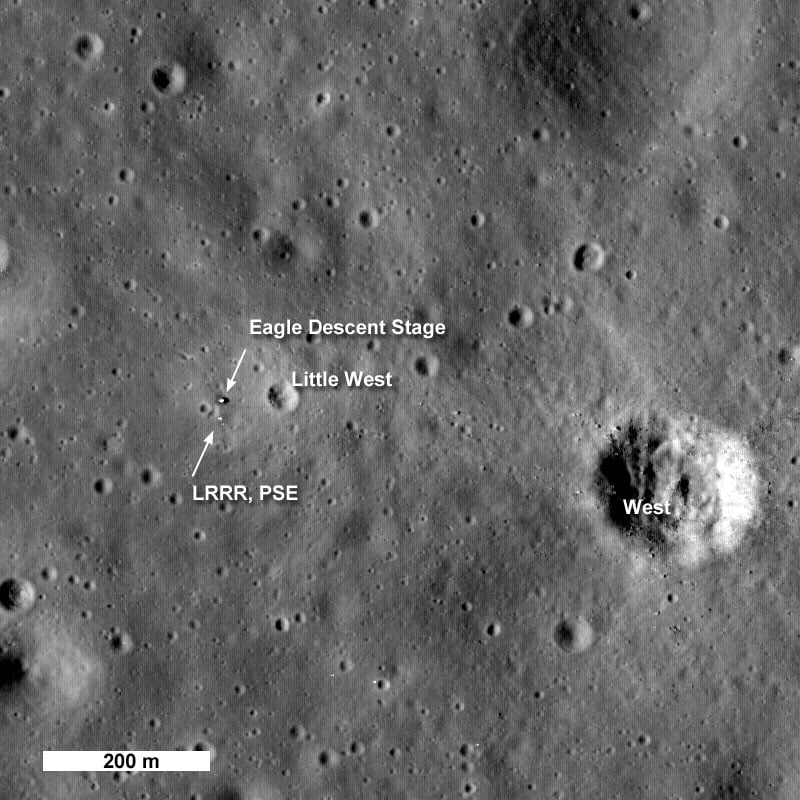[caption id="attachment_41762" align="aligncenter" width="580" caption="LROC's second look at the Apollo 11 Landing Site [NASA/GSFC/Arizona State University]. Click for larger version. "][/caption] The Lunar Reconnaissance Orbiter Camera has taken a second look at the Apollo 11 landing site. These images were taken before LRO reached its science orbit of 50 km (31 miles) above the Moon, but the lighting is different from the
previous images it took of this region,
providing more detail and a whole new look at this historic site. This time the Sun was 28 degrees higher in the sky, making for smaller shadows and bringing out subtle brightness differences on the surface. The look and feel of the site has changed dramatically. See below for a close-up view.
[caption id="attachment_41763" align="aligncenter" width="350" caption="NAC image blown up two times showing Tranquility Base [NASA/GSFC/Arizona State University]."]
[/caption] The astronaut path to the TV camera is visible, and you may even be able to see the camera stand (arrow). You can identify two parts of the Early Apollo Science Experiments Package (EASEP) - the Lunar Ranging Retro Reflector (LRRR) and the Passive Seismic Experiment (PSE). Neil Armstrong's tracks to Little West crater (33 m diameter) are also discernable (unlabeled arrow). His quick jaunt provided scientists with their first view into a lunar crater.
Nice going LROC!
This article was edited on Sept. 30 to correct a mistake about LRO's orbit at the time these images were taken.
See our previous article
on the first round of LROC's images of various Apollo landing sites.
Source:
LROC
 Universe Today
Universe Today
